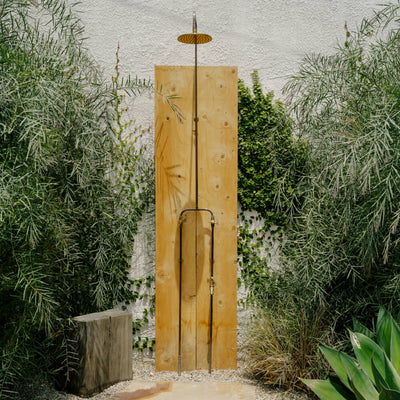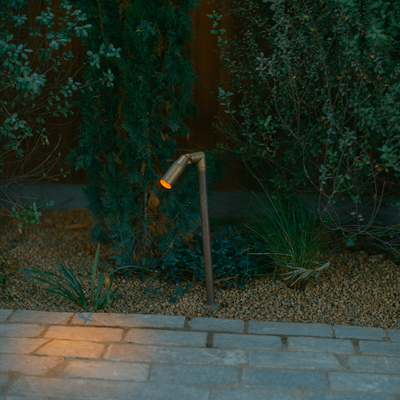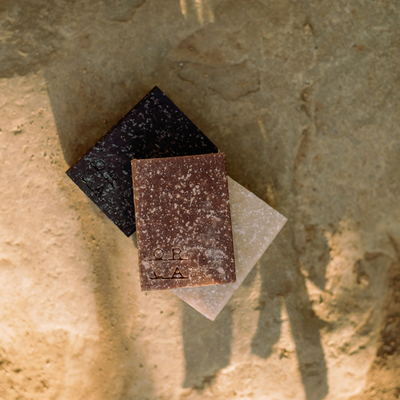Plants +
People
A study of the symbiotic relationship between
humans and the gardens they tend to.
We are pleased to introduce a special edition of Plants + People conversations—each captured last autumn while traveling across Japan, and featuring a trio of individuals who uniquely embody the tenets of Japanese gardening in practice and philosophy.

enzo
012 enzo
region: karuizawa
plant community: pinaceae, hydrangeaceae, rosaceae
photography: justin chung

If you ask Enzo to list a few of his favorite things, he’ll tell you that they include “sunlight filtering through the trees” and “visualizing the wind.” Such is the casual wisdom of the landscape architect, artist, & founder of Enzo Garden Works, whose practice is a mindful consideration of the way gardens can integrate into and become organic extensions of architecture, be it in our dwellings, public spaces, or works of art.
Based in the mountain town of Karuizawa, Enzo is a veritable tree whisperer, selecting trees and vegetation to suit specific projects as a painter might deliberately select hues of verdant emerald or brilliant crimson (it should come as no surprise that Enzo’s work has also appeared at renowned art exhibitions, including Milano Fuori Salone). As an observer of his work, a clear throughline is tension: between the controlled and the wild, the minimal and the lush, the carefully constructed and the deliberately undone.
Read on for a glimmer of our visit with Enzo, and more on forging a deeper connection to place; childhood memories in the countryside; and the importance of iterating on tradition for our shared evolution.

What is your first or earliest memory of being in a garden?
This is a story about the first time I collaborated with an architect after I started working as Enzo. The architect designs cool buildings in our area, so I felt excited for this project—landscaping a building facade and two small courtyards for a simple white-walled structure. To match the architecture, I proposed a minimal garden with only four trees; I thought it was very important to choose these special trees, so I spent six months selecting these four trees with the ideal shape, mainly in garden fields and mountains. I focused on meticulously constructing everything, from every strand of underbrush to every grain of gravel. Today, I feel very fortunate that I can often collaborate with architects in the creation of gardens. and I believe it all started from this one.


acer palmatum
(japanese maple)
Acer palmatum, commonly known as the Japanese maple, is a deciduous tree known for its deeply lobed leaves and vibrant autumn foliage. Native to East Asia, this ornamental tree comes in various cultivars with diverse leaf shapes and colors. Generally, this tree ranges from 6 to 25 feet in height

Unfortunately, I don't have my own garden at home, but there is a small rock garden in the office.
In the area where I was born and raised, there is a clear river that is famous in Japan. I have many fond memories of playing, running, and fishing in the riverbed as a child, and the scenery of the river has become a landscape of nostalgic memories.
I created the rock garden in my office with that image of the riverbed in my mind. Since it does not contain plants, we do not have any particular plans throughout the year, but we arrange the placement of gravel and sprinkle it with water on a daily basis to welcome our guests.

abies firma
(japanese fir)
Abies firma,or Japanese fir, a species of fir native to central and southern Japan. Abies firma is a medium-sized to large evergreen coniferous tree growing to 160 feet tall and 6-7 inches in trunk diameter. The bark is scaly grey-brown, with resin blisters on young trees.

In Japan, the tradition of gardening has been preserved since ancient times and is still being passed down—ranging from garden designing to maintenance. I studied landscape architecture in Kyoto, which preserves these traditions, and during my student days I was exposed to many different traditions, but one thing my teacher said that has stuck in my mind is: 'Look at the architecture.’ With these words in the back of my mind, I don't just focus on the garden, but consider the architecture as part of one holistic space. If everyone understands the intentions of architecture and thinks about creating comfortable spaces to inhabit, we will be able to create comfortable spaces everywhere in the future.
What does it mean to you to feel "planted"?
Let's say you planted one tall tree in your garden. Then that tree expands in three dimensions, giving us a sense of height in the garden or offering a new view of the outside. Trees, unlike humans, cannot move on their own. That's why I try to give each tree I plant a meaningful role and place. I believe that is the meaning of planting.

kerria japonica
(japanese rose)
Kerria japonica, commonly known as Japanese kerria or Japanese rose, is a deciduous, yellow-flowering shrub in the rose family (Rosaceae), native to China, Japan and Korea. It is the only species in the genus Kerria. In the wild, it grows in thickets on mountain slopes.

Japanese maple. The supple branches, gentle fresh greenery, and autumn leaves that captivate people are so beautiful.
What does your planning process look like? Where or how do you typically start in your creative process?
We understand the architectural space, give consideration to the surrounding environment, and proceed while listening to the client's wishes. If that element is unreasonable, we will consider the client and make a better proposal. We consider the general direction, including the architecture, and what theme, atmosphere, and materials will suit the design. Then, we place the trees and stones on the drawing & will begin searching one by one for the actual trees.
matteuccia struthiopteris
(ostrich fern)
Matteuccia struthiopteris, commonly called Ostrich fern, is a clump-forming, upright to arching, rhizomatous, deciduous fern which typically grows 2-3' tall in cultivation, but may reach 6' tall in moist, cool climates in the wild.



On the opposite end, how do you fully realize a vision when working with something so alive and in flux; how do you consider a garden "complete"?
[Sometimes] we plant seedlings and young trees to enjoy the growth of plants. However, if it is a small tree, it may not always grow as you envisioned, so we try to plant things that are close to the size and shape that we had in the image from the beginning. For this reason, we try to plant trees that have an ideal growth style specific to the planting location. As the garden grows over time, the density of undergrowth and other plants will increase, resulting in a denseness that is close to the ideal. For plants that have grown beyond the allowable range, we maintain gardens by pruning, called Sukashi, to reduce the number of leaves and branches so the tree can be seen while maintaining its natural shape.

hydrangea macrophylla
(bigleaf hydrangea)
Hydrangea macrophylla is a species of flowering plant in the family Hydrangeaceae, native to East Asia. It is a deciduous shrub growing to 7 ft tall by 8 ft wide with large heads of flowers in summer and autumn. Hydrangea macrophylla blooms can be blue, red, pink, light purple, or dark purple.



Beyond plants, what are other parts of the garden that you like to use to tell a larger story?
I like light, shadow, and the sound of water. When planting trees close to a building, I value the sunlight filtering through the trees onto the walls and floors. The fleeting eeling felt by the swaying surface and hearing the sound of water makes the everyday feel extraordinary and brings you even closer to nature.
What formal principles of arrangement or design do you follow, if any?
The boundary between architecture and garden is very important. Amaochi, a place where rain falls from the eaves of traditional Japanese temples, is a place where a line is drawn between the architecture and the garden to separate each other's territory. The architecture and garden areas are connected by laying gravel. Something that separates and connects these different worlds is what we call a Kekkai (barrier), and we use it in various places in our daily lives. I also use a method of connecting the garden and architecture with a Kekkai, which is to create a horizontal line between the architecture and the garden.
How can we each increase our garden literacy?
It's about being proud of the city we live in. In order to create a city people can be proud of, I think it is important for architects and landscape architects to work together to give over some of their private gardens to the cityscape. I believe that by doing so, we can make the cityscape greener and create a city people can be proud of.

What garden in the world is your favorite?
Entsuji Temple. This temple is located in the northern part of Kyoto City, and has a dry landscape garden with Mt. Hiei as a backdrop, which was created in the early Edo period. I like gardens that are integrated with architecture.
Describe some of your favorite sensorial details amid a garden.
Sunlight filtering through the trees indoors and how the wind can be visualized through the branches and leaves. Those are my favorite things.









